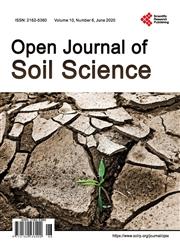Indispensable Measuring Techniques for Water Relations of Plants and Soils: A Review
引用次数: 0
Abstract
Water is essential for the existence of all living forms on the earth, and the kinds and amounts of vegetation occurring on various parts of the earth’s surface depend more on the quantity of water available than on any other single environmental factor. Therefore, the need for the non-subjective, diagnostic assessment tools for water status measurements of plants and soils is indispensable to avoid water shortage problems and achieve sustainable development goals (SDGs) of agricultural sector. The best measure of the energy status of water in plants and soils is the water potential (Ψw), which has the advantage of being physically defined and the force that causes water movement. There are many different instruments that have essential roles for measuring water status of plant, for example, Pressure Chamber, Isopiestic Psychrometer, Pressure Probe, and Osmometers. Each had the ability to indicate not only the water status of various parts of plants and soils but also the forces used to move water from place to place. Nowadays, speaking plant approach (SPA) identifies the optimal crop cultivation conditions based on the physiological status of the plants. The physiological status information from a living plant can be achieved by using a chlorophyll fluorescence imaging robot, which is a powerful tool for early detection of drought stress in plants under practical production greenhouse conditions. Moreover, recently thermal imaging and remote sensing technology are both feasible for precise irrigation guidance and precision water management.植物与土壤水分关系的必要测量技术综述
水对地球上所有生命形式的存在都是必不可少的,地球表面不同地区植被的种类和数量更多地取决于可用水量,而不是其他任何单一的环境因素。因此,需要一种非主观的、诊断性的植物和土壤水分状况测量评估工具,以避免水资源短缺问题,实现农业部门的可持续发展目标。衡量植物和土壤中水的能量状态的最好方法是水势(Ψw),它的优点是可以用物理方法定义,并且是引起水运动的力。有许多不同的仪器在测量植物水分状态方面起着重要的作用,例如压力室,等静压干湿计,压力探头和渗透计。每一个都有能力不仅表明植物和土壤的不同部分的水分状况,而且还表明用于将水从一个地方移动到另一个地方的力。目前,植物法(SPA)主要是根据植物的生理状态来确定作物的最佳栽培条件。利用叶绿素荧光成像机器人可以获得植物的生理状态信息,这是在实际生产温室条件下早期检测植物干旱胁迫的有力工具。此外,近年来热成像和遥感技术在精确灌溉指导和精确水管理方面都是可行的。
本文章由计算机程序翻译,如有差异,请以英文原文为准。
求助全文
约1分钟内获得全文
求助全文

 求助内容:
求助内容: 应助结果提醒方式:
应助结果提醒方式:


